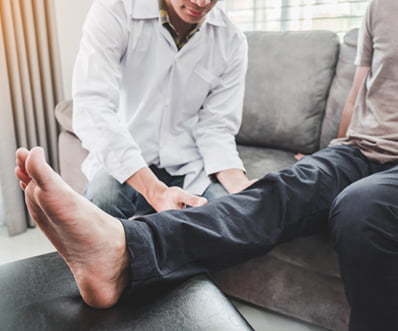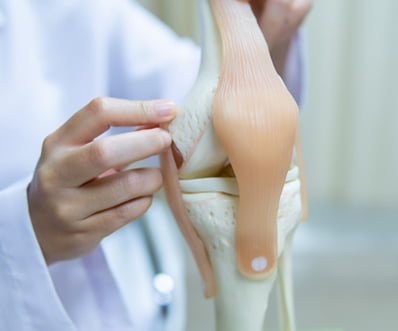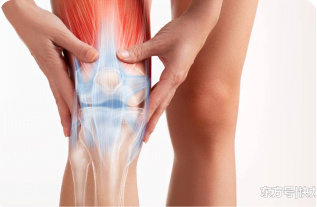Hormonal Imbalance in Men
While most men wish to maintain the powerful, manly image as they age, they should really have to keep an eye on this tiny organic substance inside their body – we are talking about the primary male hormone called testosterone. This hormone should dominate a man’s body throughout his life – as a remarkable decline in a man’s testosterone levels may create an imbalance with the other essential hormones (estrogen and progesterone), both of which should be kept at minimum levels only. Men always take pride of possessing the masculine characteristics brought about by the male hormone testosterone, including having a deeper voice, facial and body hair, strong muscle mass, etc. Most importantly, we should never fail to point out the primary sexual traits regulated by this hormone such as sex drive (libido) and sperm production.
As the female counterpart is more common, men may also experience, what others call as, “andropause” – a gradual decline in the levels of testosterone secondary to aging. However, healthcare professionals enlighten us that “andropause” only becomes valid in men having lost their testicular function due to a direct trauma or accident, an underlying condition, or surgical interventions to the prostate. Nevertheless, as men may face a possible risk of developing hormonal imbalances as they get older, they should be fully aware of the health implications associated with this condition.

Causes Of Hormonal Imbalance in Men

Low testosterone levels (“Andropause”) / Hypogonadism
Although less defined than the one experienced by women, doctors want to call it “male menopause.” One thing is certain, men go through a significant decline in their testosterone (androgen) levels as part of the aging process. The target male organs (testes) receive little to almost non-existent amounts of this male hormone responsible for a man’s primary and secondary sexual attributes. Almost all men have a likely chance of developing this condition as they get older. Perhaps diagnosed at birth (congenital), puberty, or throughout a man’s early to middle adulthood years, male hypogonadism can likewise stem from an injury to or infection of the testes, obesity, diabetes mellitus, etc.

Prostate Cancer and Benign Prostatic Hypertrophy (BPH)
On the other hand, an increase in the serum levels of testosterone gives rise for cancer cells to originate, grow, and divide inside the prostate. Prostate cancer is a highly common type of cancer found in aging men, and therapies to suppress the male hormone testosterone (androgen) hold the key to battling this condition. More than half of men aged 65 years or older have an increased risk of developing prostate cancer.
Another condition linked to the overstimulation of testosterone is benign prostatic hyperplasia (BPH). Men with BPH present with an enlarged prostate that puts a lot of pressure on the urethra and results in intense urinary discomfort. This remarkable increase in testosterone levels originates from the days of puberty to the period of late adulthood in a man’s life and further amplifies during old age. Medical professionals believe that there is also a strong link with dihydrotestosterone (DHT), another male (androgen) hormone, that triggers cells to replicate and causes a swollen prostate.
Symptoms of Hormonal Imbalance in Men

- Reduced sex drive (libido)
- Decreased spontaneous erections (erectile dysfunction)
- Low sperm count
- Change in muscle or bone mass
- Reduced body hair growth
- Hair thinning or loss
- “Man boobs” (gynecomastia)
- Increased body fat around the chest and abdomen
- Changes in mood, focus, or concentration
- Hot flashes
- Increased sweating
- Lack of energy or being easily fatigued
- Memory problems
- Sleep difficulties
Bioidentical Hormone Replacement Therapy (BHRT) for Men
The primary male hormone testosterone is in full charge of bringing out the primary and secondary sexual characteristics of a man. However, men understand that the levels of testosterone in his body decline as he gets older, and some would like to call it “andropause.” During this crucial stage of a man’s life, he may experience a handful of concerns about his sexual health, including issues with spontaneous erections or a decreased interest in sex – obviously affecting his mental health and overall well-being. As they see themselves in front of the mirror, they may recognize other physical changes such as hair loss, reduced muscle mass, or increased body fat and may deeply contemplate how their prime years are almost over.
In response to the hormonal issues that men may suffer as they age, bioidentical hormone replacement therapy (BHRT) is a natural therapeutic alternative that aims to reverse the undesirable effects of aging in a man’s life. BHRT, on the most part, utilizes plant-derived, man made hormones similar to the actual hormones inside a man’s body and mimics the overall physiologic function of our natural hormones acting on the target organs and tissues. To aid men who experience the signs and symptoms of testosterone imbalance, we offer BHRT in the form of subcutaneous/subdermal pellets that would be implanted under the skin and provide a low-dose, sustained release of testosterone for a period of 3-6 months. A safer and more effective therapeutic option for men of advancing age, BHRT is associated with a decreased risk of serious adverse events or complications compared to its synthetic counterpart.
If not deemed to be a good candidate for pellet-based procedures, your physician could recommend alternative modalities of delivery.


